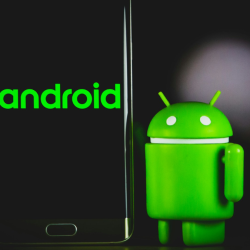If you have started to notice interactive ads online that pose a question, and then start to explore the answer with you, you’re not alone. Welcome to conversational advertising, a trend we’ll be seeing a lot more of from now on.
So, what is conversational? Put simply, it’s the ability to include logic trees into digital ads. Anyone who has been developing chatbots for their online properties or social presence or mapping out voice skills for home assistants like Amazon Alexa, will be familiar with it.
We all know that such bots can vary in their quality and sophistication. It’s not always easy to predict the kinds of things people will want to ask or find out about, but with great insight about the customer and expertise in designing the conversation paths, bots can be both powerful for businesses and helpful for end users.
Now, the bot experience is moving itself more firmly into the digital advertising ecosystem. In fact, it’s been doing this slowly for a while, and there are several established players in this market, the most notable being Google with its AdLingo offering.
One reason we’ll see growth in this area is the continuing evolution of AI and machine learning. In the same way that chatbots are increasingly being powered by AI, so we will see the human element of designing bots of all kinds being deployed more on the frameworks and business purpose of the software, rather than spending time defining the exact paths through the conversation. The bots will be learning what people want to talk about, and dynamically aligning their responses and signposts accordingly.
Ads that speak your Lingo
How, then, can conversational advertising be applied? The benefits offered by conversational advertising are being seen by the early adopters in both B2C and B2B settings. Compared to traditional display, AdLingo reports improved customer engagement, higher conversion rates, lower cost-per-lead and better lead quality. These are of course all metrics that marketers want to see performing well to help judge the success of our digital promotional activity, so this is great news.
However, metrics are only one aspect; they tell us how something is performing, but we need to interrogate data to help us understand why something happens and the impact on our business goals.
This is where conversational really becomes interesting. At the heart of conversational advertising and why it differs from, say, on-site bots that often try to understand many customer scenarios, is the focus on enhancing the customer experience, tipping it to our conversion advantage and shortening the decision-making cycle.
So, these metrics point to the contribution conversational can make to a more effective marketing funnel, irrespective of where the customer is in that funnel.
Let’s take a simple example. Imagine you are a car manufacturer looking for people who may be in the market for a new vehicle. Typically, at the top of the funnel you would probably be doing brand and model awareness activity, to help stimulate interest and support sales through a dealer network. In the world of conversational, you could do more to get onto the customer’s consideration list and move them into the evaluation stage more quickly by finding out their preferences, asking them about their situation and signposting a dealer appointment to view and maybe a test-drive, hence delivering qualified leads to your dealers.
And let’s say you want to continue these dialogues once people have completed dealer visits. You might use list-based remarketing or geolocation history to present a follow-up conversational ad. It can confirm that they went, checks how they felt about the cars, handles any concerns and perhaps even offers extras or a promotion to influence the final decision.
As you can see, conversational advertising gives any advertiser the opportunity to learn more about their audiences where having an offline dialogue would be valuable, just at scale in the customer’s native online environment instead. The key thing for marketers in the future will be a clear understanding of how people make decisions and their brand’s value proposition, so they can put some structure around this technology that is moving forward at pace to dynamically handle the detail of interactions in the conversation.
Featured image: Golden Sikorka / Shutterstock.com
































